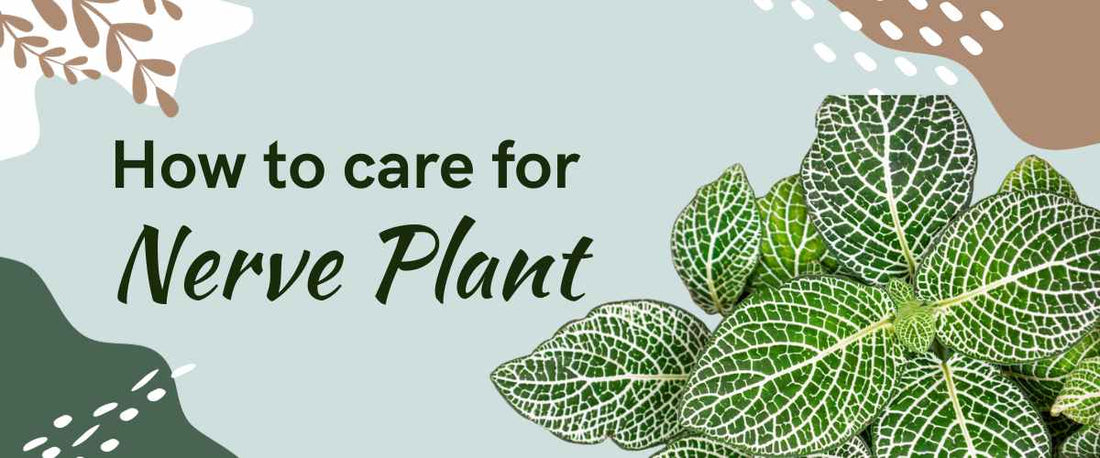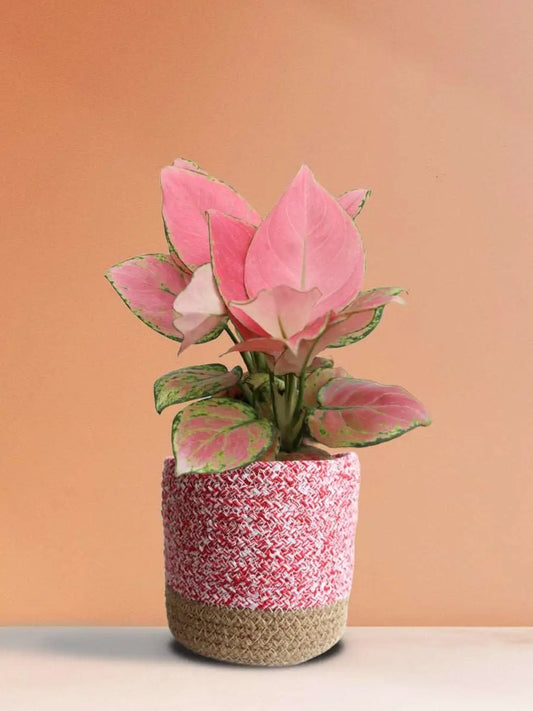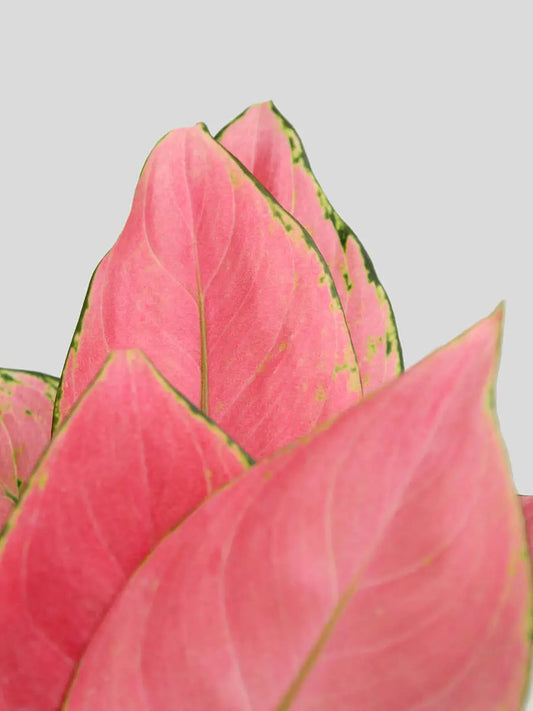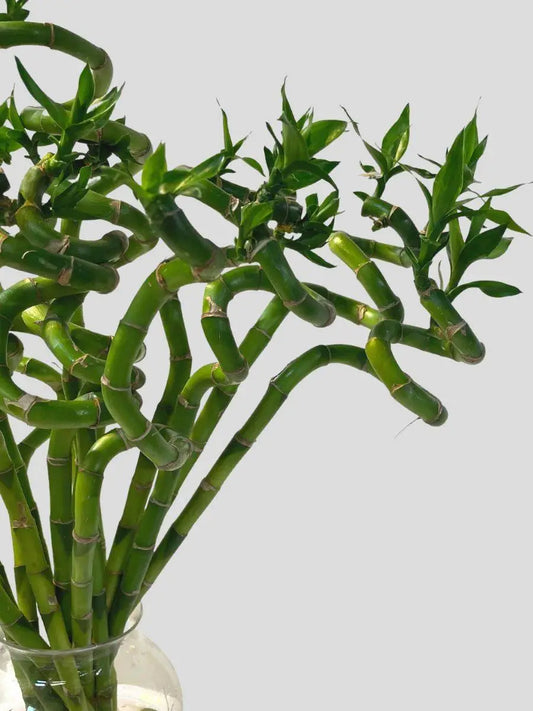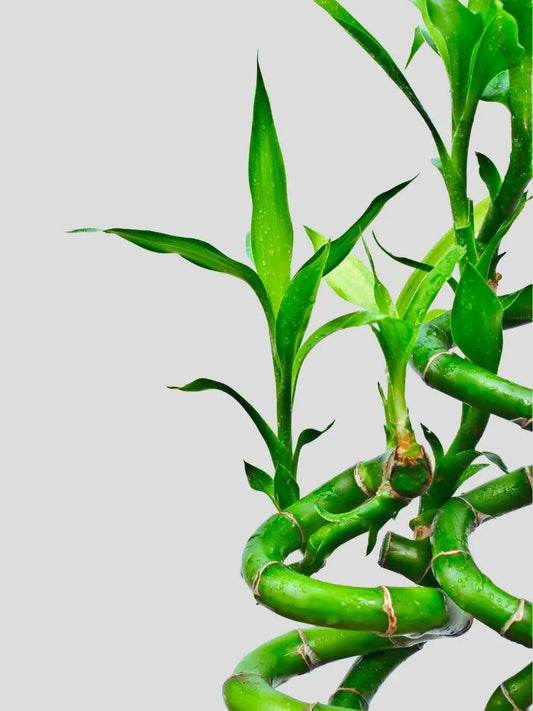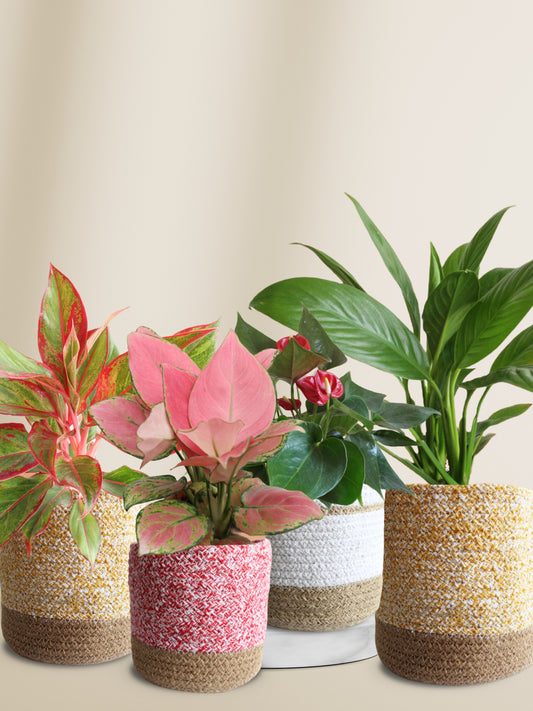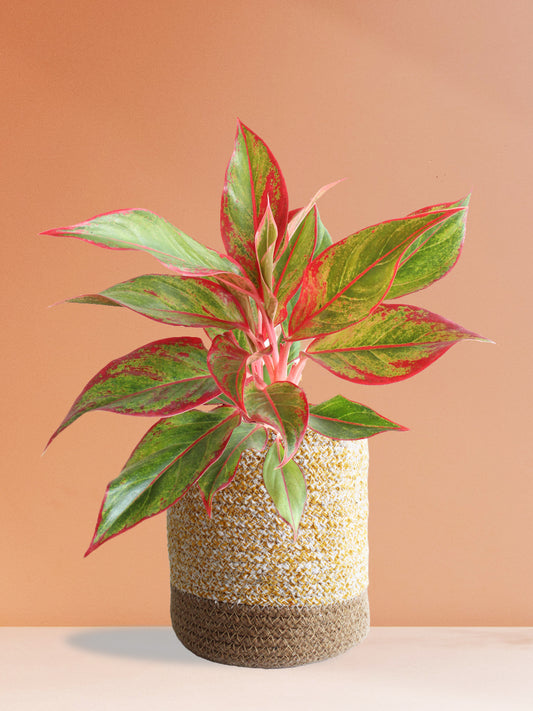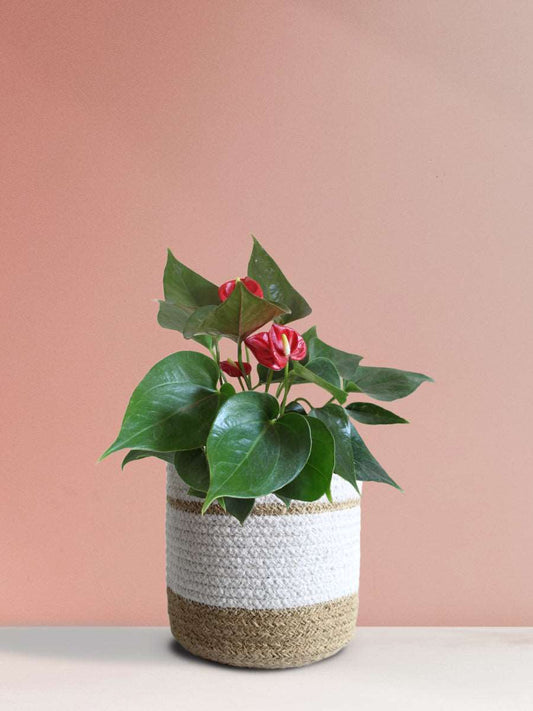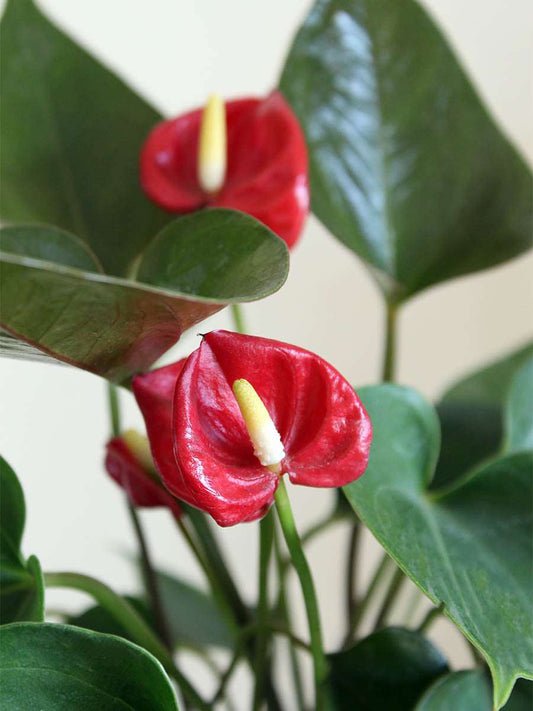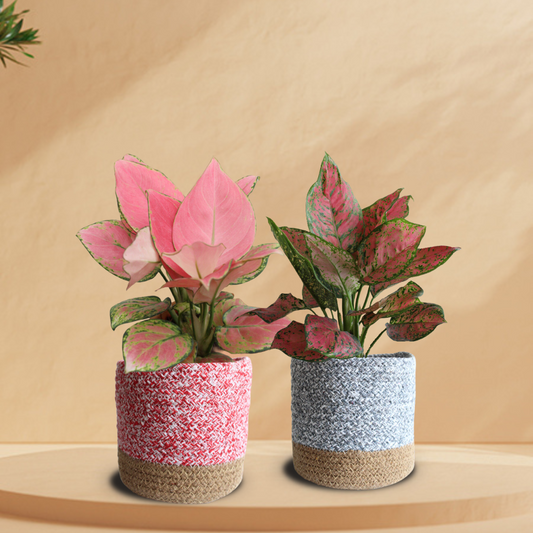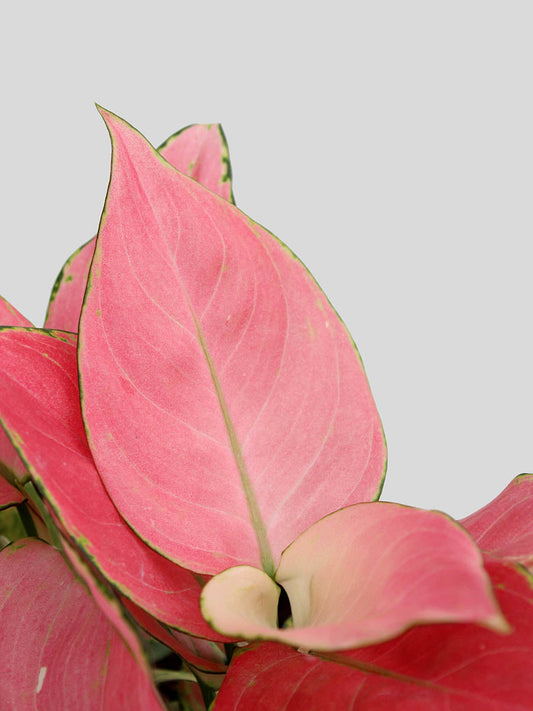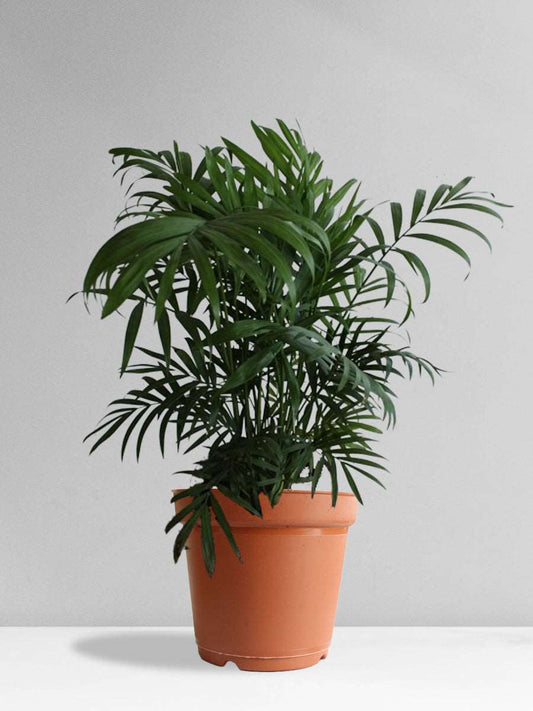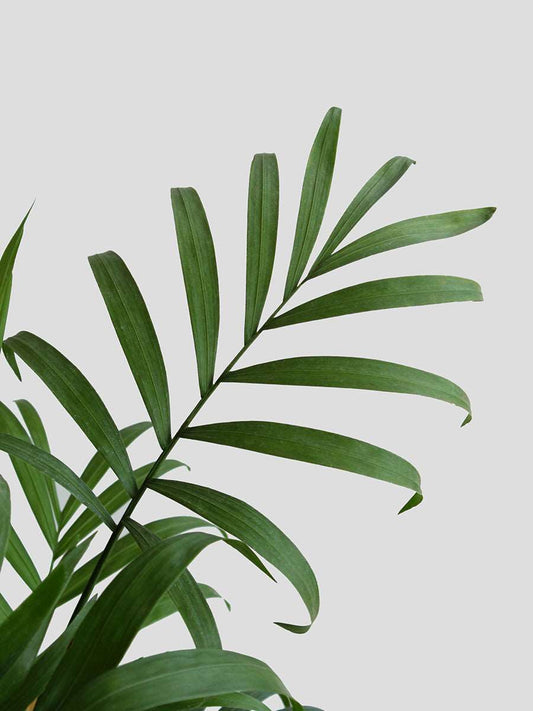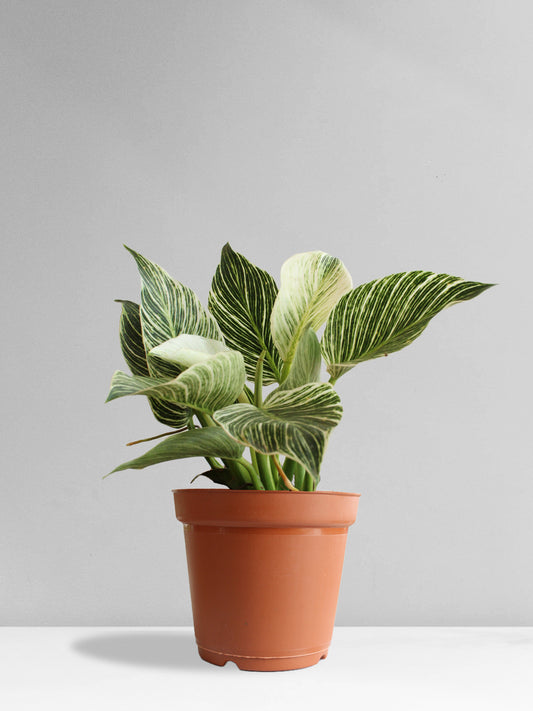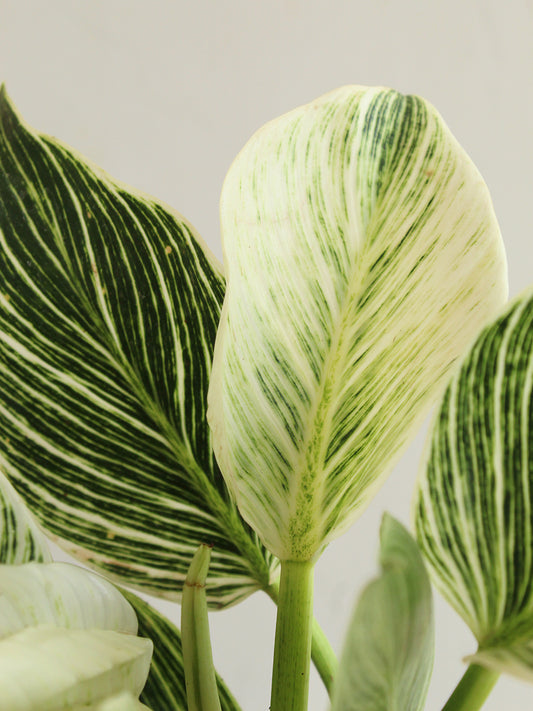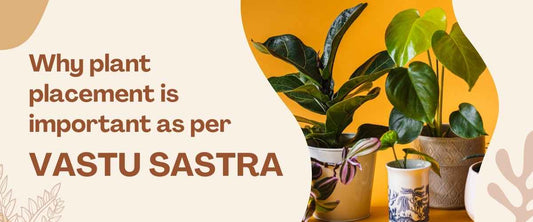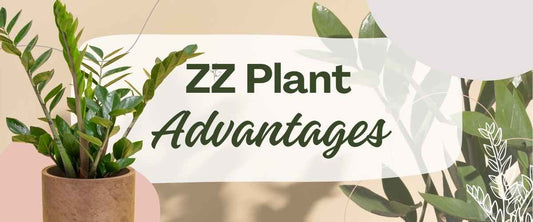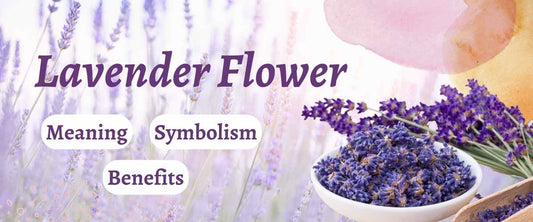Nerve Plant Care Guide
Fittonia plant, also referred to as the nerve plant or mosaic plant, is among the most intriguing houseplants that one can grow. Its leaves are very pretty because they have vein patterns on them. Also, the Fittonia species is a trailing plant that resembles little vines common to tropical rainforests in South America. Continue reading to learn about nerve plants, along with how to grow, care for, benefits, & types of nerve plants.
What is a Nerve Plant (Fittonia Plant)?

The Nerve Plant, scientifically known as Fittonia albivenis, is a little houseplant that is renowned for lush foliage. It is a spreading evergreen with bright green leaves that have fine veins. The Nerve Plant is indigenous to tropical America & is a member of the Acanthaceae family. The leaves of the nerve plant are oval & 2 inches (5 cm) long, with a point at the apex. Overexposure to direct sunlight will bleach the leaves & fade the leaf veins. Its foliage varies in color, like white & green, pink & green, or green & red.
Nerve Plant Specifications
|
Feature |
Specification |
|
Color |
Olive green leaves with varied vein colors: silvery-white, red, pink, white, & green. |
|
Size |
3–6 inches tall, spread 12–18 inches. |
|
Bloom |
Rare blooms, small reddish or yellowish-white spikes. |
|
Botanical Name |
Fittonia albivenis |
|
Also Known As |
Nerve plant, mosaic plant |
|
Type |
Perennial |
|
Native |
South America |
|
Season - Ideal to grow |
Summer |
|
Ideal Sunlight & Temperature |
Partial & Temp around 18-32°C |
|
Soil Type |
Moist but well-drained |
|
Soil pH |
Acidic |
|
Ideal Season to Grow |
Summer |
How to Grow a Nerve Plant

To grow a nerve plant (Fittonia albivenis):
- Place the plant in balanced, fertilizer-rich soil that drains well, & make sure the pot has adequate drainage holes.
- Maintain a temperature range of 18–32 °C, water when the plant's topsoil is dry, & maintain an ideal humidity level.
- To promote new growth & shape, trim dry or damaged foliage.
- For propagating nerve plants, stem-tip cuttings are ideal. However, using seed to proliferate nerve plants is less successful.
Also Check This: 7 Outstanding Plants for Meeting Rooms: Office Plants Ideas
Types of Nerve Plant (Fittonia Plant)

Fittonia albivenis is the only nerve plant, however it grows in many beautiful variations with different colors & vein patterns. A few examples of nerve plant types are:
1. Silver Nerve Plant (Fittonia albivenis 'Argyroneura'):
Silver Nerve Plant (Fittonia albivenis 'Argyroneura') is a popular variety. It has deep green leaves with very nice, thin silvery-white lines that show up as the leaves grow. This leaf design resembles a beautiful, complicated nerve design, leading to their name. This small Fittonia grows slowly, making it ideal for adding elegance to any environment.
2. Daisy Nerve Plant (Fittonia albivenis 'Daisy'):
Daisy Nerve Plant (Fittonia albivenis 'Daisy') has huge, white, gray, & green striped leaves. This plant has almost sphere-like leaves with deemed white veins that contrast well with dark green. This plant is not as quick-growing as some of the other forms & is a little fussier to care for if the environment is less tropical. It wants a bit more humidity & a bit more light.
3. Red Nerve Plant (Fittonia albivenis 'Pearcei'):
The Red Nerve Plant (Fittonia albivenis 'Pearcei') has dark green leaves with red lines that make it stand out. It thrives in more humidity & stronger light than silver nerve plants, but the deep color contrast is worth it. The best way to care for nerve plants is to keep them away from chilly drafts & direct sunlight.
4. Pink Angel Nerve Plant (Fittonia albivenis 'Angel Snow'):
Fittonia albivenis ‘Angel Snow’, the Pink Angel Nerve Plant, has light green leaves with delicate pink veins. This exquisite new variety provides an affectionate & delicate effect. Compared to other types of Fittonia, the Pink Angel Nerve Plant is bigger. Similar to F. albivenis in color, but its leaves are a bit bigger, rounder, & look more fresh, giving it an even stronger "polka-dot" effect (which is more like veins).
5. Frankie Nerve Plant (Fittonia albivenis 'Frankie'):
The Frankie Nerve Plant is another Fittonia houseplant variety. This kind is called Fittonia albivenis 'Frankie' in the scientific world, & its leaves are pale pink with green lines running through them. Its unusual color makes it a popular Fittonia variation. The plant thrives in low light, making it ideal for gardening beginners who want to cultivate it year-round.
6. Fortissimo Nerve Plant (Fittonia albivenis 'Fortissimo'):
The Fittonia albivenis 'Fortissimo' Nerve Plant has bright pink & red lines on its very dark green leaves. It is renowned for its rapid growth & is an excellent choice for those seeking to occupy a space with a remarkable effect!
7. ‘Black Star’ Nerve Plant (Fittonia verschaffeltii, 'Black Star'):
‘Black Star’ nerve plants are typically so dark they look blacker than green. Their red pedestals look lovely against dark foliage; thus, “Black Star” does best in hanging baskets near windows.
Also Check This: Top 17 Best Plants You Can Grow in a Bottle (Decor Idea)
Tips to Care for Nerve Plants
The following recommended maintenance steps to care for the nerve plant include:
1. Sunlight Requirement for Nerve Plants:
Fittonia love bright indirect light & do extremely well as house plants. They do well next to east, west, & south windows but struggle with the direct light coming from a south window.
2. Watering Requirement Guide for Nerve Plants:
When it comes to water, Fittonia loves it & would rather be moist than soaked. When the soil is dry, like every third day, soak it well. However, Fittonia’s leaves will wilt if they dry out too much.
3. Temperature & Humidity Guide for Nerve Plants:
Nerve plants thrive best in 65–90°F (18–32°C) environments. They like regular daytime & cool nighttime room temperatures. Sudden fluctuations in temperature are strongly unacceptable to nerve plants.
Nerve plants thrive in rainforest-like environments that are humid. They thrive well under cloches, humid bathrooms, & enclosed gardens. Encouraging a high level of humidity contributes to steady growth. Additionally, a room humidifier can help keep the plant's moisture levels steady in dry areas or during dry winters.
4. Soil requirements for nerve plants:
Nerve plants need good soil to stay healthy & grow. Organic-medium potting mix with peat moss as the base is what they need. The soil should have the right amount of water, nutrients, & air flow.
5. Fertilization Guide for Nerve Plants:
Using the right fertilizer is important for helping plants grow & getting good results. During the growth season, every seven days, use a balanced liquid fertilizer that has been diluted to half of its original strength. For nerve plants, a 5-5-5 nutrient works well.
Also Check This: Indoor Plant Watering Guide: How to Water House Plants
Benefits of the Nerve Plant (Fittonia Plant)
1. Air-Purifying Properties:
Fittonias, also called nerve plants or mosaic plants, are able to detoxify the air. They are able to remove benzene, toluene, & trichloroethylene from the air. They help lower the environmental levels of nitrogen dioxide & benzene.
2. Good for Gifting:
The Fittonia plant is small & easy to handle, making it a great choice for giving as a gift. Additionally, the nerve plant is a symbol of "balance," “unity in nature,” & "luck.”.
3. Health Benefits:
Researchers have found that being around plants can help people feel less stressed & anxious. A nerve plant's calming green color & nerve-like pattern on its leaves can make anyone feel more at ease just being in the presence of the plant in their own living space. Moreover, having a nerve plant indoors can also improve mental health.
4. Cultural Benefits:
Some cultures believe the Fittonia plant brings good luck & exceptional success in any career. Possibilities of improved mood & social interactions are being considered for those who keep this plant in their living spaces.
5. Ideal for Indoor Décor:
Different types of the nerve plant have leaves with different colors & patterns on them, which makes them pretty to look at. The leaves have a unique veined design that is symmetrical. They come in small sizes that make it easy to put them on a desk, table, hanging basket, or terrarium. Plus, planting it in a Fittonia terrarium is a simple & beautiful way to increase its visual appeal.
6. Pet-Friendly Plant:
Not only are nerve plants great for humans alike, but they are also completely harmless to cats & dogs, making them an ideal plant choice for households with pets.
7. Traditional Medicinal Uses:
In the past, different tribes in the Ecuadorian Amazon used the Fittonia plant for various purposes. People used the roots to make tea, treat toothaches, & get rid of headaches & pain in the muscles & joints.
Also Check This: Breathe Easy: 11 Best Indoor Plants For Oxygen
Conclusion
Nerve plants are beautiful, easy-to-care for, & have aesthetic appeal & health benefits. They are suitable for both indoor & outdoor use. No matter how experienced you are with gardening, planting a nerve plant is a great idea.
FAQs
Q1. Does Fittonia purify the air?
Ans. Yes, Fittonias have the ability to purify the air & certain harmful substances, such as benzene, toluene, & trichloroethylene.
Q2. Is Fittonia a lucky plant?
Ans. Fittonia, also known as nerve plants, symbolize growth & renewal. The Fittonia plant is also considered to bring good luck.
Q3. Can I keep Fittonia indoors?
Ans. Yes. You can keep Fittonia plants indoors.
Q4. Does Fittonia love water?
Ans. Yes, Fittonia loves water & likes to stay moist, not soggy.

